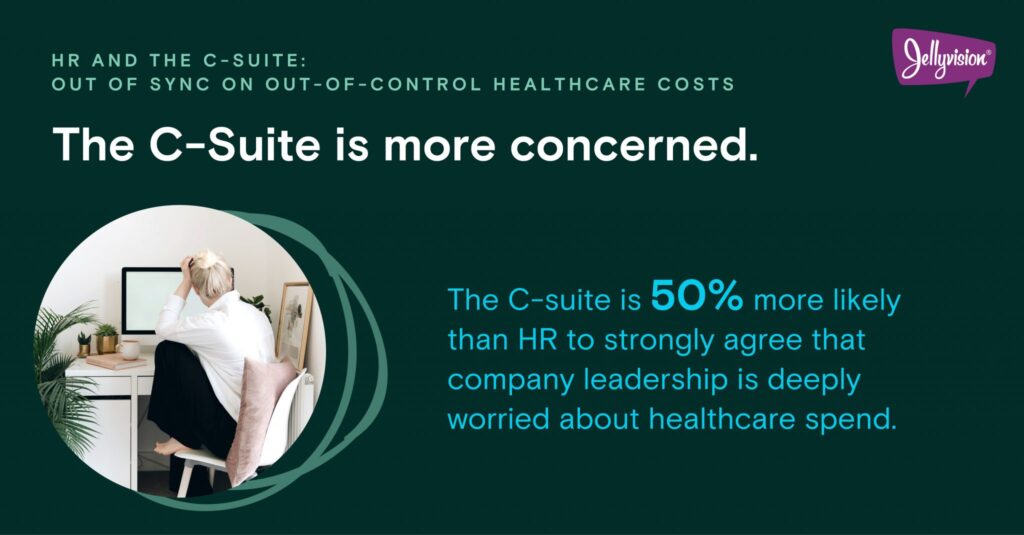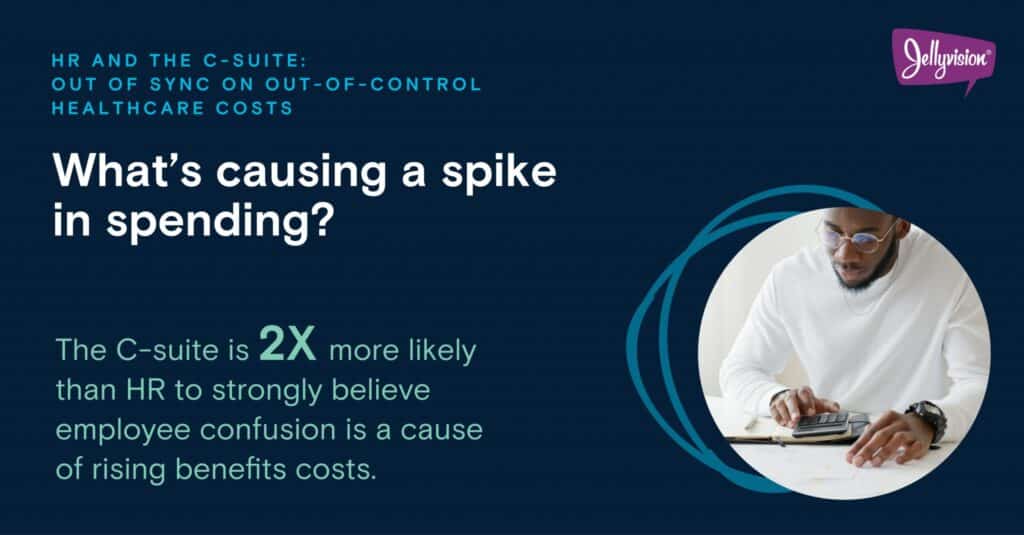Healthcare costs are rising at record rates, and they’re not showing any signs of slowing down. And with COVID only adding to the bill, employers are hyper-focused on how to curb healthcare spending once and for all.
But with so many other current issues to tackle—like record turnover rates, an increase in behavioral health concerns, and figuring out how to reach employees remotely—how big a priority is the healthcare spending problem?
We surveyed hundreds of HR leaders and CXOs to find out, and the results were clear: HR and the C-suite aren’t aligned when it comes to decreasing healthcare spending for their organization.
It turns out that there’s lots of confusion about prioritization, who’s responsible for tackling out-of-control spending, and what’s at stake if rising costs aren’t addressed. Here are the highlights:
1. When it comes to controlling health costs, the C-suite is more concerned.
The good news: both HR team members and the C-suite know that controlling healthcare costs is on the radar for company leadership. When asked if company leadership is concerned about the issue, 85% of HR folks agree or somewhat agree. Similarly, 91% of C-suite executives agree or somewhat agree.
The disconnect starts when we look at the people who strongly agree that healthcare costs are a major concern for company leadership. The C-suite is 50% more likely than HR to strongly agree that company leadership is worried about rising costs.

2. The C-suite says healthcare spending is a top priority, but HR isn’t so sure.
We saw similarly mixed responses when we asked if controlling costs is a top priority for the business. Overall, 86% of HR professionals and 91% of the C-suite somewhat or strongly agree that healthcare and benefits costs represent a primary priority. But, again, the C-suite is nearly 50% more likely to strongly agree it’s a top business priority.
3. When it comes to healthcare costs, who’s in charge?
When we examined who’s responsible for healthcare costs—i.e., keeping a pulse on the numbers and delivering results—the C-suite and HR pointed fingers in opposite directions. (Think “Spiderman pointing” meme). Each of them believed those responsibilities fell under different roles.

Learn more about where HR and the C-suite are misaligned (and how to fix it).
4. The C-suite is distressed about employee confusion.
When it comes to their benefits, employees are stressed and confused, and they’re looking to their employer for guidance. That’s why we asked HR and C-suite professionals if they thought employee confusion is causing a spike in healthcare costs. More of the C-suite were worried about it, with 83% somewhat or strongly agreeing, while only 64% of HR folks said the same.

Take control of healthcare spending once and for all
If the C-suite wants to limit healthcare and benefits spending, the first step is opening the lines of communication between HR and exec teams, on several fronts. Sharing priorities, setting expectations, and leveraging HR’s employee benefits expertise is the first step on the way to curbing healthcare costs.
Step number two? Curbing employee benefits confusion. And that starts with a tool like ALEX, which guides employees towards smarter choices that drive better health and financial outcomes—for them and for your organization.


